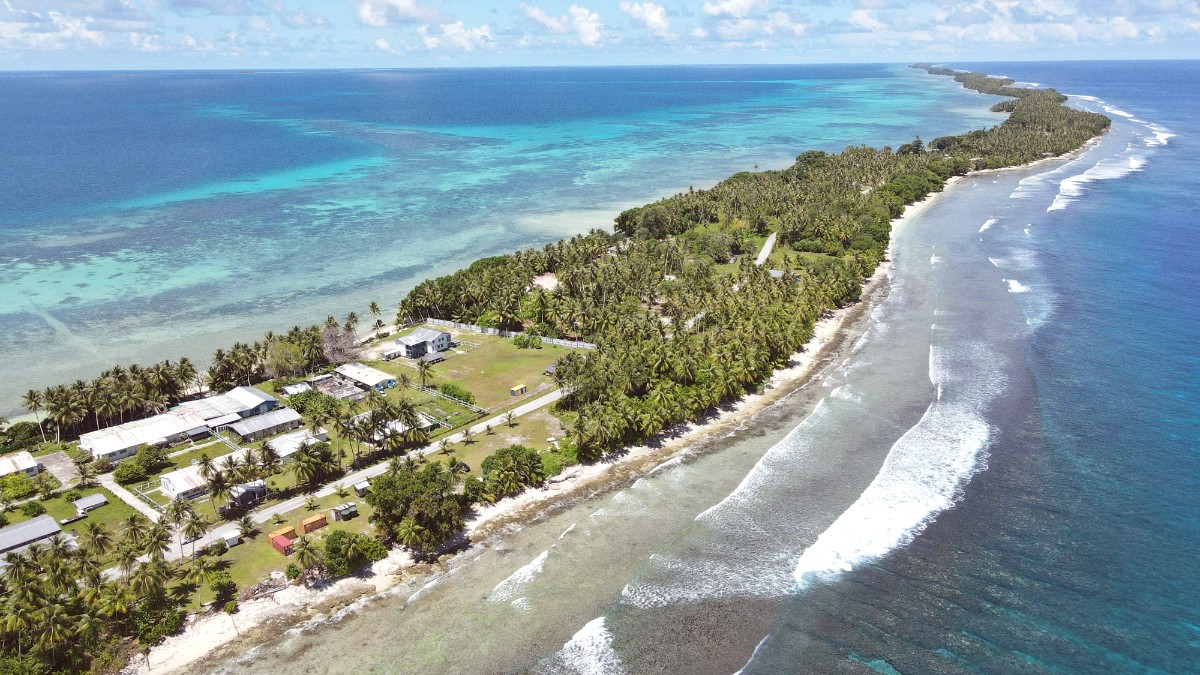
Tuvalu is one of the world's least visited countries, a destination for exclusive and personal travel. It departs from the usual tourist trails; Tuvalu invites you to discover its quiet charm, its resilient people, and its untouched natural wonders. Here, you become more than a visitor; you become a part of the island's narrative, even for a short time. Prepare for an adventure that shifts your perspective, leaving you with memories of unparalleled tranquility and human connection.
Tuvalu faces significant environmental challenges, especially from climate change and rising sea levels. Travelers can make a difference by choosing eco-conscious options and respecting the fragile island ecosystem.
Minimize plastic use, conserve water, support local businesses, and engage respectfully with the environment and community. Your visit can support the preservation of this unique destination.
Tuvalu is an independent island nation in the vast South Pacific Ocean, approximately halfway between Hawaii and Australia. Its geography defines its existence and resilience. The nation comprises nine distinct, small coral atolls and reef islands. These include Funafuti, Nanumea, Numea, Vaitupu, Nukufetau, Funaota, Nui, Niulakita, and Niutao. Together, these islands form a scattered archipelago, each a delicate ecosystem of land and sea. The total land area measures approximately 26 square kilometers, making Tuvalu one of the world's smallest countries by landmass.
Funafuti, the capital, also serves as the largest atoll. It hosts the country's only international airport and serves as the main hub for commerce and government. Tuvalu lies within the Polynesian triangle, a cultural region spanning thousands of islands. A defining characteristic of Tuvalu's geography is its low elevation. The highest point on any of its islands reaches only 4.6 meters above sea level. This places Tuvalu among the lowest-lying nations globally, placing it at the forefront of global conversations about sea-level rise and climate change. The vast, clear lagoons are a central feature of each atoll, providing calm waters for fishing, swimming, and exploration, contrasting with the often-rougher open ocean.
Approximately 26 square kilometers
Nine distinct coral atolls and reef islands
4.6 meters (15 feet) above sea level
South Pacific Ocean, within the Polynesian triangle
Funafuti (main islet: Fongafale)
The atolls themselves are rings of coral that typically enclose a central lagoon. These formations are dynamic, shaped by ocean currents, tides, and weather events. The land areas are narrow, often just a few hundred meters wide, with the ocean on one side and the lagoon on the other. This unique geography creates a close relationship between the islanders and their marine environment. Villagers draw sustenance, transportation, and recreation from the lagoon and ocean.
The delicate balance of these ecosystems supports a variety of seabirds, fish, and other marine creatures, making the Funafuti Conservation Area a highlight for nature enthusiasts. This remoteness, while challenging for logistics, preserves an unique environment and culture.
The Funafuti Conservation Area (FCA) encompasses several uninhabited islets and a significant portion of the lagoon, protecting diverse marine life. Visitors explore these areas by boat, enjoying snorkeling and wildlife viewing.
Tuvalu's history is rich, shaped by Polynesian migration, European exploration, colonial rule, and a journey to independence. Polynesians first settled these islands, with archaeological findings indicating a human presence stretching back around 2,000 years. Oral traditions speak of ancient migrations, mainly from Samoa and Tonga, bringing unique cultural practices and linguistic influences. These early settlers developed sophisticated knowledge of navigation, fishing, and agriculture, adapting their lives to the limited resources of the coral atolls. Their self-sufficiency and communal living formed the bedrock of Tuvaluan society.
European contact began in 1568 when Spanish navigator Álvaro de Mendaña y Neira first sighted one of the islands. For centuries, European contact remained sporadic, mainly involving whaling ships and traders. In 1819, Arent de Peyster, a British navigator, named the islands the Ellice Islands, honoring British politician Edward Ellice. The late 19th century saw increasing British influence, leading to the islands becoming part of the British Western Pacific Territories in 1892. This marked their administration as a protectorate. In 1916, a significant administrative change occurred when the Ellice Islands combined with the Gilbert Islands (now Kiribati) to form the Gilbert and Ellice Islands Colony.
Ancient migrations from Samoa and Tonga shaped Tuvaluan culture and traditions.
From British protectorate to a colony with the Gilbert Islands, administrative changes marked centuries.
A decisive referendum in 1974 led to independence on October 1, 1978.
During World War II, Tuvalu gained strategic importance. Funafuti, Nanumea, and Nukufetau served as Allied military bases, notably for the United States. The construction of airfields, including the runway on Funafuti that still serves as the international airport, dramatically altered the landscape and connected the islanders with the wider world.
A small and intimate nation, with most residents on Funafuti.
Australian Dollar is the currency used. Cash is highly recommended.
Revenue from the '.tv' domain is a significant national income source.
The heart of government and commerce, located on Fongafale islet.
The nation's only international gateway, also on Fongafale.
Fongafale is small and flat, ideal for walking, cycling, or motorbiking.